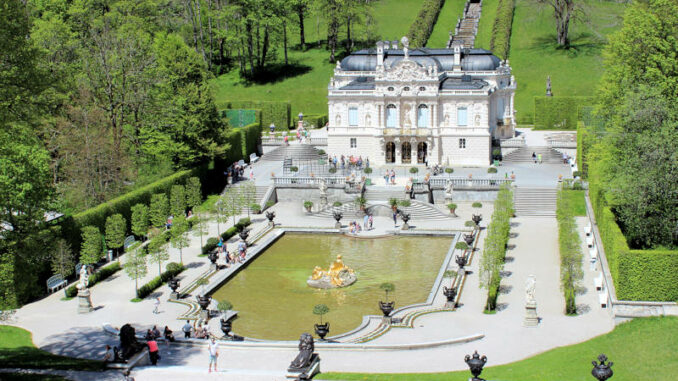I grew up in the town of Avon Connecticut; a place whose sole icon—if the pictures at our local pizza places are to be believed—is the six-story hilltop Heublein Tower. Built by the German immigrant Gilbert Heubline who promised his wife Louise he would build her a castle. I spent many a summer afternoon hiking to the top of Talcott Mountain to visit this tower. It isn't something I thought to much about at the time, or even reflected upon, until recently I found myself hiking up a a muddy cliffside on the way to visit Burg Hohenzollern in the town of Hechingen. It was funny in one of those, "the more things change the more they stay the same" type of ways, because for the first time in years I actually began to reflect on Heublein towner as a holdover of the type of Cultural practice and phenomenon I was experiencing in Baden-Württemberg. Now I don't want to confuse anyone into thinking these buildings are aesthetically similar, but rather I want to make a case that they are a product of the same cultural experience.
Heublein Tower
Burg Hohenzollern
Historically, castles dot the German landscape for a number of reasons. The first and most prominent of these is the legitimate strategic significance they offer as fortified positions. From the death of Charlemagne in 814 until the Congress of Vienna in 1815 the small German states engaged in numerous wars where having a defensible position on a hilltop seemed like a really good idea. I don't want to call castles a relic of a German military tradition, but in the case of most castles in Germany, it is not uncommon to find a sign or two describing what damage they sustained during the 30 years war, or other more local conflicts. The second reasonable existence of castles comes from them being working outposts and the basis of cities. Hohentübingen, the local castle here in Tübingen was a military encampment which years later had a large enough surrounding settlement to earn it Market Statues from the Holy Roman Empire. Both of these existences of castles are cool, and practical, but don't have much bearing in my consideration of Heublein Tower, which was a vanity project in the 19th century.
In fact, a lot of the most famous German Castles are also 19th century vanity projects which exceed their original purpose. Burg Hohenzollern, which I visited last week, was built in its modern form between 1847 and 1867, conceding with the time the Heublein family emigrated from Suhl, Bavaria (Suhl is now in the Bundesland of Thuringia even though Bavaria is still a Bundesland German borders can be strange sometimes) to Hartford Connecticut.
Probably the most famous example of 19th Century prestige castles comes from Mad King Ludwig of Bavaria whose Castles of Neuschwanstein and Linderhof are beautiful and relevant excuse for more pictures of castles to be put in this post. Neuschwanstein was finished in 1869, and manages to lineup with this vague timeline. As the 19th century progressed people in power began to change how they viewed the castle, from a demonstration of practical defensive local power into a display of opulence and power through prestige. None of the German castles in this post were ever meant to be a defensive structure, but rather like Heublein Tower, were designed as aesthetically charged summer homes. Due to a change in material and political conditions in the 19th century the cultural practice of building castles was changed in a way that also changed the product. The idea of the castle was fetishized above the actuality of the castle.





Comments
Post a Comment